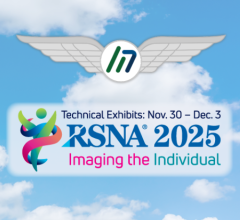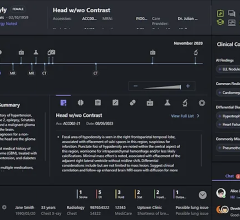
Greg Freiherr has reported on developments in radiology since 1983. He runs the consulting service, The Freiherr Group.
Forget the Hippocratic Oath: This Is How To Build Trust With Patients

Faith is not based on evidence. Trust is.
Faith comes from an innate need to believe. Trust grows from a pattern of actions.
And yet — in both faith and trust, we look for reasons to believe. When it comes to believing in medicine, the Hippocratic Oath is often where we look. Yet, this oath is not all it’s cracked up to be.
This ancient Greek oath calls on physicians to swear to the gods and goddesses that they will uphold certain ethical standards, according to the National Library of Medicine (NLM).
“It also strongly binds the student to his teacher and the greater community of physicians with responsibilities similar to that of a family member,” NLM states on its website.
But nowhere in the Hippocratic Oath does it explicitly state — as so often attributed to it — that physicians “first do no harm.”
One phrase in this oath is particularly noteworthy: “Into whatever houses I enter, I will enter them for the benefit of the sick …” It is on this phrase that value-based medicine can hang its hat. But I don’t think it’s a good idea to do so.
Believing in Technology
A commitment to value-based medicine would be more than enough, so long as it doesn’t require us to put our faith in technology. And that is the trick.
We want to believe in technology, if for no other reason than because technology does not require a code of ethics. Unfortunately, how technology is used determines its value in healthcare. And its use hinges on human judgment.
It is not an appealing picture. The mighty infrastructure we have created — of diagnostic and information technology, noble in design and stature — is actually very frail. Information returned by multimillion-dollar CTs, MRs and PET/CTs, their data conveyed and crunched by banks of servers with their blinking lights and thousands of miles of wire, many connected to a computing cloud — is a human moment away from failure.
Too much is riding on this meld between people and technology to depend on a code of ethics … any code … certainly not one the American public often cites for saying what it does not.
Value — Pure and Simple
The Hippocratic Oath has outlived its usefulness. It’s become a crutch that creates a false sense of security.
Patients know what they want from providers. It is what consumers want from whatever they consume, whether it is healthcare, electronics or wall paint.
The “it” is value. And to achieve it in healthcare, physicians must listen to patients. And equipment makers must listen to both physicians and patients.
Twenty years ago they were listening only to doctors, an assertion that can be proved in one word: claustrophobia. As medically defined, claustrophobia is rare. And, by that definition, open MRI, therefore, was only needed in a few cases.
But MRI cylinders bring out the claustrophobia in many people. Ask patients who’ve been in MR scanners and they’ll tell you.
People don’t like tight spaces. They didn’t 20 years ago. And they don’t now.
Two decades ago patients made their voice heard by choosing open scanners that, unfortunately, delivered suboptimal results. That had a profound effect. Within a few years, manufacturers were producing either open or wide- and short-bore scanners, a change that is in force today. In making these machines, manufacturers listened not only to patients but to physicians, who made a convincing case for high-field imaging. They made more patient-comfortable scanners so they didn’t trade image quality for comfort.
This is a great model for value-based imaging. It proves that equipment makers can meet the requirements of both physicians and patients — that they can make equipment both effective and comfortable for the patient. And that is what value is all about. After all, why get an MR scan — even a comfortable one — if it doesn’t give the needed results.
This formula works for equipment makers too, because equipment that meets the needs of both physicians and patients is all but certain to succeed, if it is done cost-effectively.
So this triad of value-based medicine — cost efficiency, effectiveness and patient comfort — is a win for everyone involved. Holding healthcare to the same standards as any other consumable depends on … value. And the road to value begins with listening.
Building Trust
Equipment makers that listen to physicians and patients naturally build trust, but only if three conditions are met. First, the company has to be sincerely interested in doing something about what is being said. Second, the speaker has to believe that what is being said is truly being considered. And third, the manufacturer must be perceived as believable.
This can be tricky. To be believable, equipment makers have to acknowledge that there are limits to what can be done. For example, there is no debate that women would like screening mammography without breast compression. The truth, unfortunately, is that some compression is necessary. This does not mean, however, that women’s concerns cannot be acted upon.
For example, could a technologist achieve a minimum level of compression and then hand control over to the woman about to be screened? For that to work best, the technologist might first explain the need for compression to build the trust that enough compression will be achieved for high-quality imaging.
One company has designed a product that does this, reporting in a preliminary study that, if given the controls, women often compress their breasts more than the technologist would have.
Could listening to patients and providers lead to technology designs that produce other such results? Could a more welcoming, collegial approach to medicine make for happier, more comfortable — and more effective — healthcare?
Taken even further, could a similar approach involving accurate, timely and relevant communication get physicians to trust each other more; to be inclusive of the multiple specialties whose technologies in the past led them to turn inward; to improve the care they give patients? (In other words — enterprise imaging.)
What future opportunities in diagnostic imaging and enterprise imaging might be uncovered by genuinely listening to patients and physicians? How might the opinions of these two groups factor into equipment design if physicians and patients were looked upon as colleagues who share the common goal of improved healthcare?
Communicating Better
Communication can be the catalyst for a provider system devoted to value. In this, cost-efficiency, effectiveness and patient comfort are each a critical building block of equipment design. Immutable and irreplaceable.
In healthcare, trust comes from belief. This belief must be based on evidence that the trust patients put in their physicians — and the technologies their physicians use — is deserved. It is what produces value.
We can’t rely on modern interpretations of an ancient oath to believe that modern healthcare has it.


 December 09, 2025
December 09, 2025 









